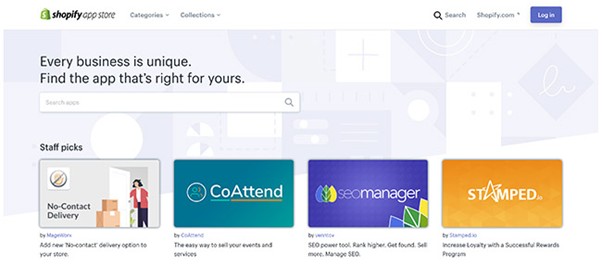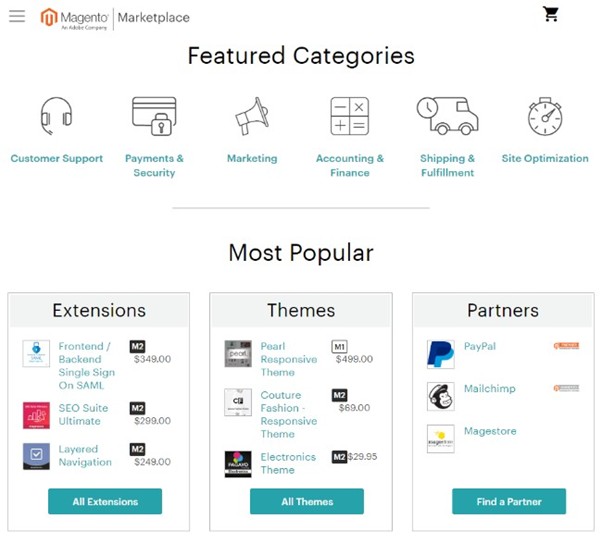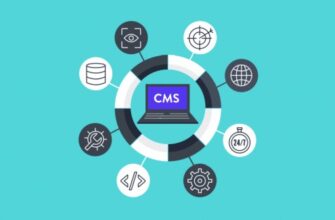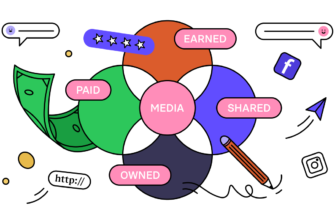- Which is better for an online store: Shopify vs Magento
- Ease of use
- Design and decoration
- Accepting payments
- Modules and extensions
- E-Commerce Features
- Which platform is better for promotion, Magento or Shopify?
- SEO optimization
- Content Marketing
- Shopify vs. Magento cost comparison
- Shopify Pricing Plans
- Prices for using Magento
- Shopify or Magento?
- Magento Advantages and Disadvantages
- Pros and cons of Shopify
The business of selling goods on the Internet has been rapidly gaining popularity in recent years. More and more companies are opening online stores to expand their online presence and reach a new audience of buyers.
To launch a successful online store, you need to choose a decent e-commerce platform. The most popular platforms on the market include Magento and Shopify.
In this article, we will take a closer look at the main features and differences of these CMS to help the reader decide which is better, Magento or Shopify, for the development of a particular Internet project.
How many calls and sales will I get by ordering contextual advertising from you?
I need to calculate the conversion of my website Describe
the task
in the application
Calculate potential ad revenue Google
contextual advertising calculator
Which is better for an online store: Shopify vs Magento
So, how do you know which is better for eCommerce, Shopify or Magento? Both systems have their advantages and disadvantages.
Magento is a powerful open source platform with many features, aimed primarily at large businesses. Shopify is a cloud-based solution that is easier to use and suitable for small businesses. Let’s analyze them in more detail.
Ease of use
Shopify has an undeniable advantage in this matter. The platform was originally developed as a user-centric solution. The interface is intuitive and does not require special programming skills.
Most of the operations – adding products, customizing the design, integrating payment systems are performed through a convenient control panel. The repository has many ready-made store design templates.
Magento provides much more customization options, but working with the platform requires technical knowledge, which is why this CMS is considered more difficult for beginners. The initial process of creating and setting up an online store will take incomparably more time.
Design and decoration
In the Shopify app store, you can find a huge number of professional templates from third-party developers for every taste:

Here you can choose a ready-made solution for a fashion boutique, an electronics store, a jewelry store, and so on. Themes are easily edited through an intuitive interface – you can change the main colors, fonts, images, block layout.
Magento also has its own theme library, but there are far fewer of them. In addition, most themes are paid:

But the possibilities for individualizing the visual display are much wider here. The system allows you to implement almost any design ideas and create a unique interface for a brand identity. At the same time, knowledge of HTML, CSS, JavaScript is indispensable. Or you will have to involve a web designer in the development.
Accepting payments
The ability to integrate as many payment methods as possible is critical to conversion and customer experience in an online store.
Shopify has its own payment system built into the platform, Shopify Payment, which is based on Stripe and allows transactions via PayPal or bank cards (Visa, MasterCard, American Express):

For stores with large mobile traffic, it will also be useful to connect Apple and Google Pay. All this can be realized through numerous applications of this platform.
Magento also supports all popular gateways and payment methods. However, if for Shopify you can connect any gateways through the App Store in one click, then in Magento you will need the help of a technical specialist to connect each individual payment system.
Modules and extensions
Shopify users have a powerful Shopify App Store in their arsenal with thousands of ready-made applications for marketing, analytics, order management, shipping services connection and much more.

Apps are installed and configured in a couple of clicks directly from the site’s admin panel. This eliminates the need to independently develop additional modules or order them from a programmer and significantly saves time and money on expanding functionality.
As part of the Magento Marketplace, you can also download useful add-ons, but its capabilities are more modest:
How many calls and sales will I get by ordering contextual advertising from you?
I need to calculate the conversion of my website Describe
the task
in the application
Calculate potential ad revenue Google
contextual advertising calculator

The main advantage of this content management system is its open source code, which allows you to modify any function of the platform to suit your needs. But for this you need to attract developers and lay a certain budget. But the implementation can be maximally adjusted to the business logic of the store.
E-Commerce Features
Both platforms have a user-friendly interface for adding new products through the admin panel, setting filters and options. At the same time, Magento is better suited for large catalogs – bulk import and export is available here, as well as group editing of commodity items.
Also, both CMSs make it possible to assign a discount to a particular product, category or orders from a certain amount. At the same time, in Magento you can set up more complex logic when creating promotions.
Which platform is better for promotion, Magento or Shopify?
Effective promotion of an online store is the key to attracting the target audience to the site and a powerful trigger that stimulates the growth of sales. The choice of platform is one of the key factors influencing the possibilities for further optimization of the resource and marketing campaigns.
Let’s look at the marketing capabilities of both CMS to decide which platform is better, Magento or Shopify.
SEO optimization
The position in organic search results and the number of targeted visitors depend on how optimized the site is for search engines. Shopify is optimized out of the box.
Sites are well indexed, the user can customize the title, description, keywords for pages, and in the admin panel, you can fill in micro-markup in the Open Graph format. Also, breadcrumbs are displayed on the catalog pages for organizing internal linking, canonical pages for pagination are correctly selected, etc.
Sites based on the Magento platform also rank well in search engines, but for effective promotion, such a resource will need to be improved – a full-time programmer or an outsourced specialist will be required to implement this or that functionality.
Content Marketing
You can easily connect a blog to your Shopify store, where you can publish articles about products, customer reviews with photos and videos, helpful instructions for using products, and other useful content for visitors.
There is also a built-in functionality for collecting a base for email marketing and setting up mailing lists with announcements of new products and special offers. The user has access to ready-made modules for publishing content on popular social networks, as well as the ability to place internal contextual advertising of goods inside text materials.
Magento can also be used for content marketing by placing internal links to individual product items from informative articles. There is also a built-in web interface for managing the publication of content on social networks.
Shopify vs. Magento cost comparison
When comparing two CMSs, be sure to take into account how much it will cost the company to maintain the site, because some platforms will be too expensive for small niche shops.
Shopify Pricing Plans

Shopify is a cloud-based platform with a monthly subscription fee. Several basic tariffs are available to users:
- Basic ($32/mo). Suitable for starting a small online business. It includes a basic set of features for creating and running an online store, as well as a choice of 10 free design templates. Administrator can create 2 accounts for managers.
- Shopify ($92/mo). Optimal for most online stores of medium size. More design options, integration of additional services and an improved analytics and reporting system are available here.
- Advanced ($399/mo). Solution for Internet projects with an extensive catalog. Includes maximum scalability and growth, 15 staff accounts, and the largest selection of themes.
All plans also offer a yearly discount.
Prices for using Magento
Magento is an open source platform that you can download and install on your own hosting for free. However, for a commercial project, additional investments will be required. For the site to work correctly you will need:
- Hosting. Here you will need a tariff with support for PHP and MySQL (the ability to add databases), as well as disk space sufficient to host the project (at least 2 GB at the start). The price of such a server starts from $5/month.
- Individual design and functionality improvement. Most likely, the starting capabilities of this CMS will not be enough for you, which means you will need the help of a technical specialist. Magento developers are highly valued and there are not so many of them, so you will need to pay from $600 for their services at the start.
- License for commercial use. The platform charges a monthly subscription fee when using the site to conduct business in the amount of $1988. Therefore, this amount will also have to be included in the general budget.
Thus, when comparing Magento and Shopify in terms of the burden on the company’s budget, the latter is the clear leader. The system offers different tariff plans, among which there are solutions for both small startups and large businesses.
Shopify or Magento?
Summarizing the strengths and weaknesses of both services to help you decide whether to choose Magento or Shopify.
Magento Advantages and Disadvantages
The advantages of Magento are undeniable:
- Possibilities for scaling. Due to the open source code, when the load on the project increases, it can be transferred to another hosting, new modules can be installed to expand the functionality, which is impossible for cloud platforms.
- Multilingualism and localization. The site can be easily localized to work in any region, as well as translated into other languages.
- Integration with third-party services. There are plugins for synchronization with popular payment gateways and delivery operators, as well as marketplaces.
- Security. System technicians pay great attention to its security – regular updates, protection against hacking, data encryption.
However, do not forget about the pitfalls:
- High maintenance cost. Due to the complexity of the platform and high subscription fees, significant investments are needed both at the development stage and in the future.
- Difficulty of mastering. Due to the abundance of settings and configurations, to fully use the features, you need to spend time learning the engine or attracting a third-party specialist.
- You need quality hosting. Magento requires powerful servers that can handle heavy loads to run smoothly.
Pros and cons of Shopify
The SaaS platform has a lot of advantages and stands out from the competition:
- Easy to use. The cloud service has an intuitive interface and easy setup. All settings are accessible from a convenient menu, elements are dragged and edited in real time. Thus, even a person without technical skills will cope with the launch.
- Base of ready-made templates. The user has an extensive library of professional design themes for a variety of niches – fashion, electronics, food, etc.
- Integrated analytics. Powerful tools are available to track and analyze all aspects of the sales pipeline. The administrator can analyze traffic, conversions, audience behavior and more. This allows you to optimize business processes to increase revenue.
- Technical support. Shopify provides 24/7 support for everything from basic to complex technical issues. You can contact by email, phone number, chat.
However, there are also disadvantages:
- Commission for each transaction. In addition to the monthly payment of the tariff, the system charges a percentage of each completed transaction – from 0.5% to 2%, depending on the service package. These are additional costs that will not happen when using Magento.
- Closed source code. The store owner is completely dependent on service updates and cannot make global changes to the operation logic himself.
- Migration is more difficult. Transferring a ready-made store to another CMS is technically difficult due to the closed architecture and the lack of direct access to data.
- Fewer opportunities for B2B. Shopify is primarily focused on B2C retail. For corporate sales, complex discount systems, flexible pricing, the functionality is significantly limited.


















